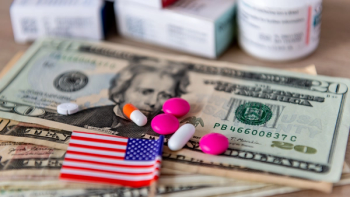
FDA "Stymies Competition in Drug Industry", Says PCMA
The Pharmaceutical Care Management Association (PCMA), an organization that represents the nation’s leading pharmacy benefit managers (PBMs), which administer prescription drug plans for over 210 million Americans, released a new white paper investigating FDA’s influence on drug prices and competition in the pharmaceutical marketplace.
The Pharmaceutical Care Management Association (PCMA), an organization that represents the nation’s leading pharmacy benefit managers (PBMs), which administer prescription drug plans for over 210 million Americans, released a new white paper investigating FDA’s influence on drug prices and competition in the pharmaceutical marketplace. The PCMA argues that competition within branded drugs is undervalued in FDA priorities and that FDA’s structures and regulations fundamentally hinder competition.
Written by Alex Brill, CEO of Matrix Global Advisors, and sponsored by PCMA, the report first details the various ways in which FDA promotes innovation and expedites its review of new drugs and the overall regulatory process. The author mentions the benefits of the Breakthrough Therapy, Fast Track, Priority Review, and Accelerated Approval designations, and also commends the pre- and post-approval economic incentives the agency has in place. Brill says, however, that the way in which FDA conducts approvals contributes to the market dynamics that affect a product’s price. Brill writes, “Without a statutory and regulatory agenda for the FDA that carefully examines the agency’s effect on pharmaceutical competition, some consumer welfare may be unnecessarily lost.”
Brand-to-brand competition has not been a priority of FDA, notes the report’s author, and as a result, the “agency unintentionally stymies competition in the drug industry.” However, some could argue that FDA should not focus on competition, as its main concern is protecting and promoting health, not drug pricing. He blames the protracted biosimilar pathway development period, the agency’s stunted ability to approve new drugs without the help of user fees and Congressional appropriations, and the backlog of generic drug applications as reasons for why competition is at a standstill. Regarding user fees, critics might counter that FDA may not be able to approve drugs without hiring good scientists to review the applications, a condition which requires money. This could be especially relevant in the case for the review of biologics, which are often associated with severe adverse events and need to be tested thoroughly.
The delay in final guidance on the biosimilar pathway has “thwarted the development of a U.S. biosimilars industry-thus preventing the savings that competition would generate,” Brill writes. The naming problem for biosimilars could also impede utilization of these products and could also reduce the probability that drug makers would pursue a biosimilar for a product. Use of the Risk Evaluation and Mitigation Strategies (REMS) program to prevent generic drug manufacturers from obtaining drug samples has also contributed to fewer competitors, argues Brill.
Brill contends that, because FDA is so focused on the approval of innovative products that address unmet need, drugs that offer benefits comparable to existing drugs are not eligible for expedited approval and get backlogged in the FDA approval system. Generic drugs are not given the same attention as innovative products, Brill says, and it takes FDA “on average more than three times longer to approve an ANDA than to approve a standard NDA/BLA, and fully six times longer than it takes to approve a priority NDA/BLA.” As a result, innovator treatments benefit from additional market access with no legitimate threat from competitors. In addition, Brill notes that biologics cannot benefit from the competition generated as a result of the Hatch-Waxman Act, which mostly governs innovation among comparable small-molecule drugs.
The white paper serves to shift the blame away from pharmaceutical companies as the “evil entities” responsible for high prices and the culpability away from insurance companies as the creators of an inefficient reimbursement scheme. The drug industry and insurance industry have been at odds in the drug pricing conversation, with representatives from each industry speaking out about exorbitant specialty drug prices. America’s Health Insurance Plans (AHIP), a top health insurance lobby group, says the pharmaceutical industry has historically supported “near monopoly pricing” practices, while trade groups like Pharmaceutical Research and Manufacturers of America (PhRMA) have countered that the problem is the rising cost of care and insurance premiums. Rather than focus on the insurance or pharmaceutical industries, the PCMA-supported report attempts to point the finger at FDA, citing ineffective processes as a major contributor to high drug costs, especially in the case of biologics and specialty medications.
It is important to note that PBMs, such as Express Scripts, have a vested interest in keeping drug costs low. The PBM industry has largely supported the biosimilar movement from an early stage, as their utilization could produce an estimated 15% to 20% savings from innovator drug prices.
“I believe the intent of Congress in providing a biosimilar pathway is to allow greater access through increased competition,” Peter Pitts, president of the Center for Medicine in the Public Interest and former FDA associate commissioner, told BioPharm International in a call. “The FDA’s job is to provide a pathway that’s transparent and predictable to allow enough companies to get into the game. If FDA doesn’t do that, it isn’t fully representing the intent of the legislation.”
Pitts believes FDA is doing the best job that it can, given the circumstances. “The creation of biosimilar regulations has to be a thoughtful and evolutionary process. The agency wants to make sure it’s as comprehensive as possible to create a level playing field.” Pitts adds, “The same proposition to transparency is relevant to nonbiologic, complex drugs as well, such as Lovenox.”
Source:
Newsletter
Lead with insight with the Pharmaceutical Executive newsletter, featuring strategic analysis, leadership trends, and market intelligence for biopharma decision-makers.



